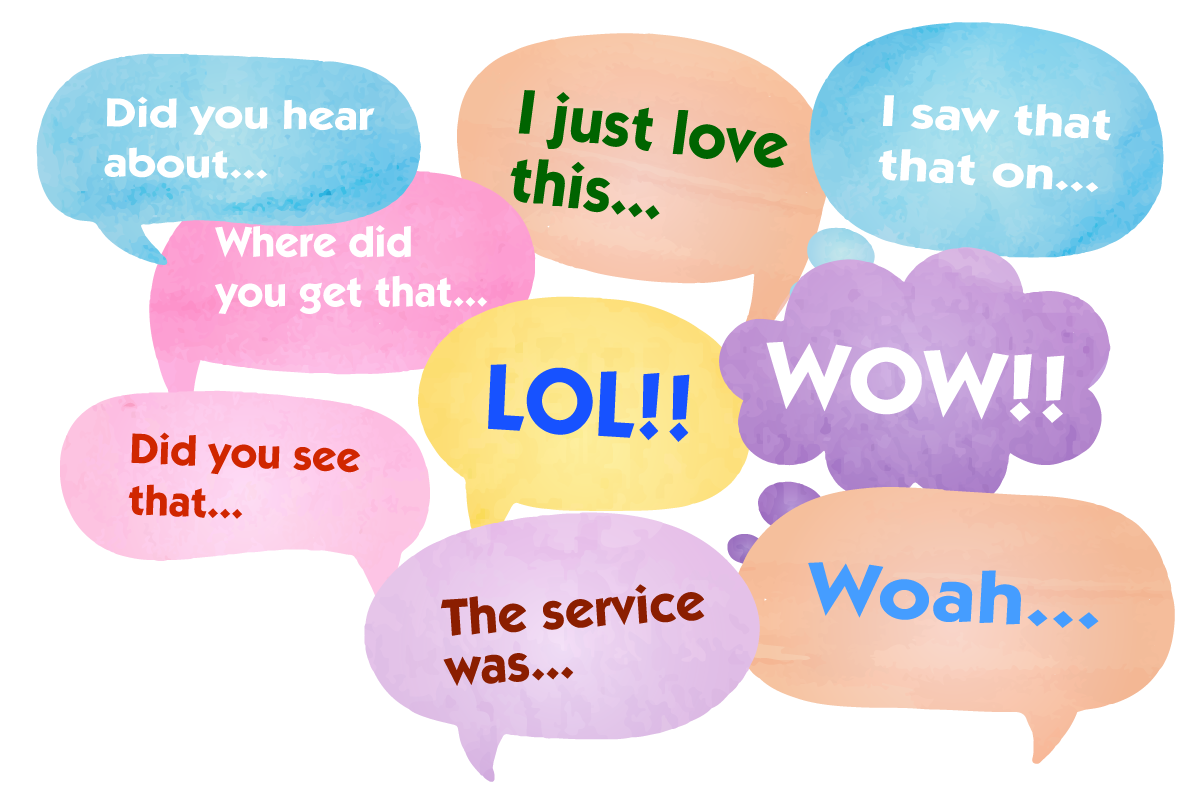afresh: Create a Buzz for Your Biz with Viral Marketing

Viral Marketing is one of the most effective and low-cost marketing strategies around. Yet few business entrepreneurs know how it works and how to use it.
Viral Marketing, otherwise known as word-of-mouth or social marketing, is a very powerful tool that every business must use. It is low-cost, requires very little budget, and works even without us knowing about it. It is an inertia that works for our business. Yet many businesses do not know how to use it, how it works and how it can be used to meet business objectives.
Most marketing professionals believe that word-of-mouth is the most compelling way to bring in new customers. Why? Three reasons are often given to explain the pull of word-of- mouth. First, we are bombarded with messages everyday that we don’t know whom to trust anymore. We hardly believe the salesman, or even the spokesperson (after all, they were hired specifically to sell the product). Hence, we turn to people we believe the most: our families, friends, neighbors and colleagues.
Second, everywhere you look nowadays, there is an advertising or promotion for a product or service. With ads constantly flooding our senses, we have learned to filter them out. We may have repeatedly seen a print ad for customer management software, but oftentimes we will buy the product only if a friend tells us that he or she has tested the product and it worked quite well. That’s the third part, trust.
As the world gets more connected everyday, product buzz now spreads much faster. Thanks to the Internet and mobile phone technologies, it is now easier to get information and advice from other people. Product reviews are everywhere on the Internet. The proliferation of social media, blogs, and discussion forums has allowed us to get more extensive information about the product.
To create a buzz that would hopefully snowball with potential customers, the first step should start in the product. The product or service itself should be exciting, fun, innovative and different. It should really excite the users and be worth talking about.
Products that are used – such as books, mobile phones, apps, gadgets, clothing, services, etc. – can easily generate word-of-mouth since the consumers can now share his or her experience about the product or service. Good products and services often generate a lot of conversation, and it is the business’ responsibility to put that into good use.
What if your product is not as groundbreaking as say, the iPhone? Then you must go out there and start talking with people. These strategies are basically the same as activities you do to generate publicity for your business. The main difference lies in that you control what you communicate to users to ensure that all you get are positive word-of-mouth.
You can do this in several ways. One is to talk to your friends, ask them to recommend the product to others, and hope that the word-of-mouth grow quickly. That’s the basis for Social Media Marketing (SMM) and “Going Viral”.
Dollar Shave Club’s “Our Blades Are F***ing Great” Campaign is a great example. They only spent $4,500 on a humorous video that got over 26 million views and propelled them towards 12,000 signups in the first 48 hours. And they backed up their marketing with a good product at unheard-of prices. Eventually leading to a multi-billon dollar buyout. That’s the power of Viral marketing. It does take exposure to achieve and is therefore not the only component of a successful word-of-mouth campaign.
You also need to talk in every possible opportunity you can find: be it online, industry conferences, meetings, seminars, events and charity meetings. If you are selling an e-book on gardening, visit horticultural societies and chat with people you meet. If you wrote a book on parenting, strike a conversation with the couple seating on the plane beside you.
A more effective way, however, is to go after the so-called “opinion leaders.” These are individuals that serve as sources of information, and are often considered by people as credible. It is important that you identify the trusted channel that will be your spokesperson. Ever wonder why many companies hire celebrities to endorse their products? Because these companies know that many people look up to these celebrities and believe in them.
Hiring comes in many forms from straight payments to percentages of sales to sponsoring with free product.
If you can’t afford to hire a celebrity, look for a person in the industry who is credible enough. You may choose a teacher to recommend the interactive software you developed to teach kids the value of savings to parents of her students. Hopefully, the parents will talk among themselves and those who have already tried the software will endorse it to other parents. Parents often look up to teachers, and know that they share the same values in raising a good child. Eventually, word will spread around and sales will take off.
Or pitch your story to the media. A writer may print your story, or a television anchor may recommend your web site to their viewers. Free publicity, plus good word of mouth: nothing will beat that combination!
The Internet has become a great vehicle for propagating buzz, with a potential for making word-of-mouth truly global. Having your own web site allows you to post information about your products or service. Best of all, the Internet allows information to spread so fast experts had to coin the word “viral marketing” to describe it.
Other effective means of spreading the word on the Internet is through the use of “Recommend This to a Friend”. The recipient will most likely check out the site recommended by his or her friend, rather than by some marketing company.
How do you maintain word-of-mouth? The key is to maintain consumer interest in your business. Keep stimulating interest in your products. Social media, blogs, and discussion boards can create a community of the staunchest of “believers” who will keep interest in your products burning. Word-of-mouth can also be complemented, extended and supported by traditional communications methods such as advertising, publicity and other marketing tools.
ord-of-mouth is the most natural method of communicating with consumers. It should be an integral part of every business’ marketing program. Yet like other marketing tactics, it should not exist in a vacuum.
